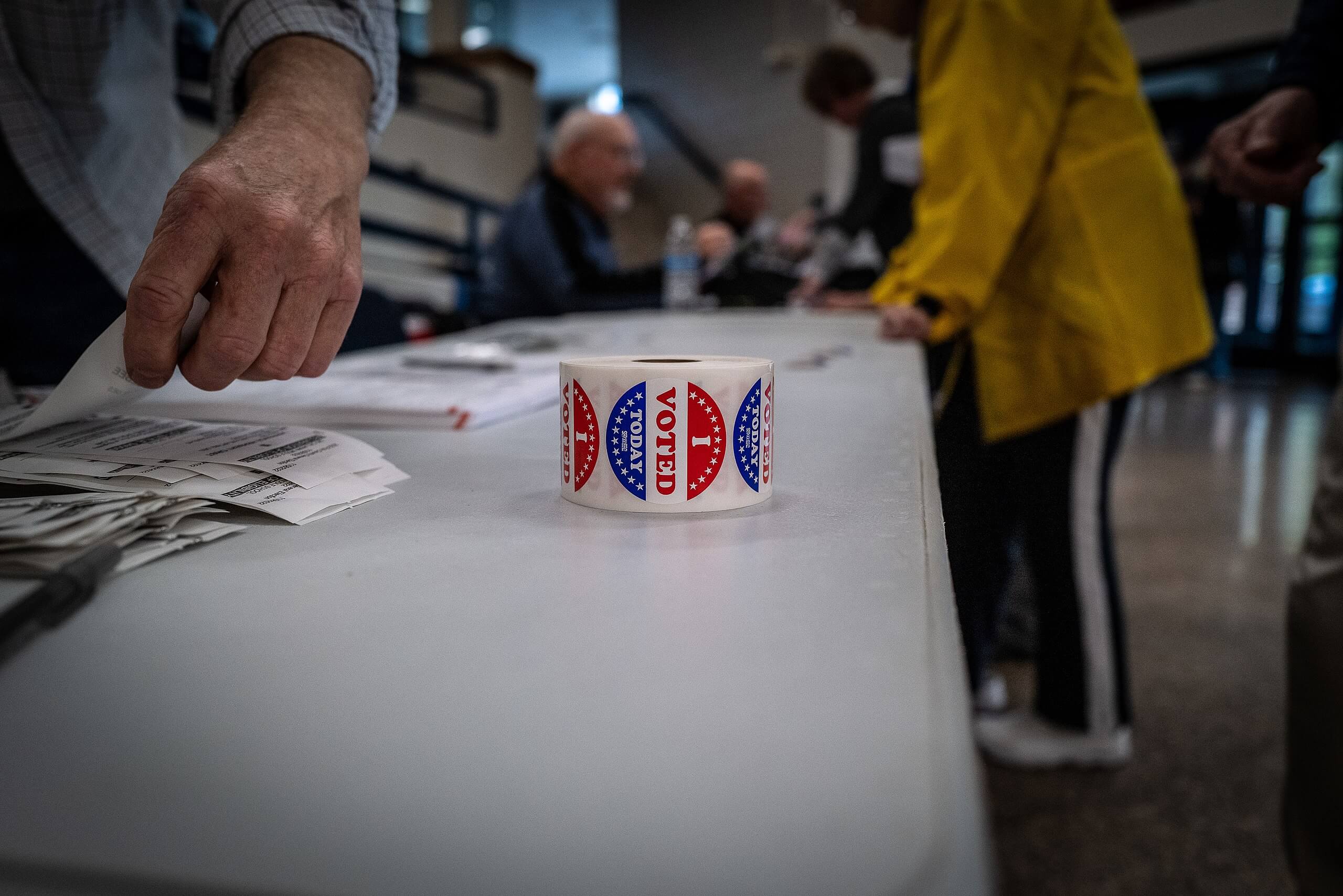
This article, belonging to the Observatory of Populism, is part of Institut Montaigne’s new partnership with the Illiberalism Studies Program at George Washington University, which will extensively cover populist voices, whether in Brazil, Europe, or in the crowded US midterm election landscape. For our third discussion session, we interviewed Cas Mudde, Stanley Wade Shelton Professor UGAF in the School of Public and International Affairs at the University of Georgia and Professor II in the Center for Research on Extremism at the University of Oslo, and Gérard Araud, former French Ambassador to the UN and the United States. Both Cas and Gérard provide their respective analyses on the results of the US midterm election.
Republicans win the House of Representatives, in a victory that falls short of the predicted “red wave”, fueled by partisan polls and a liberal media captivated with predictions of a strong Republican showing. The Republican Party gained a very slim majority in the House, but losses for the Democratic Party, where they occurred, were small. Democrats retain the majority in the Senate, (but Democrats are holding their breath for Georgia’s Dec. 6 runoff election between Democratic Sen. Raphael Warnock and Republican candidate and Trump-endorsed Herschel Walker). Despite Democrats’ minor losses, this is the best showing for an incumbent party in a midterm election since 2002. This strong showing can be best explained by three Republican failures: first, The damaging impact of Donald Trump on the party, second, the Republican positions on key campaign issues proving too extremist for voters, and third, poor candidate selection on the part of Republicans.
Since January 6, there has been an extremist shift in the Republican Party. Over 300 candidates running in this election denied the results of the 2020 election in one way or another. Only ⅓ of the candidates accepted the results of the previous election. What is surprising is that, despite the slow roll-in of results and the surprising result, there is little talk for now of a stolen election this time. This is an indication that many of those who denied the results may not have genuinely believed in that stance.
Donald Trump
There is a uniform narrative materializing, among both elite Democrats and elite Republicans, that Trump was the big loser of these midterm elections and that he cost the Republicans a bigger victory. Despite this elite narrative, Trump still commands adoration among the party’s base.
Like the Tea Party a decade ago, Trump has taken advantage of the American primary system, harnessing the Republican base, which tends to be more radical than the general electorate, to advance Trumpist Republicans to the general election. However, these candidates, often lacking political experience, fared poorly in the general election (Trump-aligned candidates performed 3-4% worse than other Republicans on average).
Ultimately, the dynamics of the primary undermined the Republicans. In the end, Donald Trump may be the loser of these midterms, but he is a loser who remains in charge. His ego and his mounting legal challenges are strong incentives and perhaps weighed in favor of him running again for president as he just announced his third presidential bid and launched the 2024 campaign at his Mar-a-Lago estate.
Ron DeSantis
Ron DeSantis, GOP governor of Florida, won his gubernatorial race, but only performed 2% better than Marco Rubio, who also won reelection as Florida’s senator. These results may show that DeSantis, seen by many as a successor (or challenger) to Trump in the Republican Party, is not in as strong a position as some had previously assumed. Still, for Republicans who seek to move past Trump, DeSantis is a strong candidate who shares Trump’s anti-woke cultural warrior image but who is also politically experienced, predictable, and savvy. This shift from a boisterous outsider who is able to energize the electorate to a more politically capable leader is a pattern observed in European politics as well, notably in Italy with the shift from Matteo Salvini to Georgia Meloni. Nevertheless, DeSantis’ poor showing vis-à-vis Rubio could be indicative of his limited personal appeal. His victory is better analyzed as the result of structural factors: shifting demographics in Florida and an increasingly conservative Latino population.
Despite the structural factors, DeSantis’ victory also needs to be viewed through the lens of voter suppression and voter intimidation. The latter is particularly potent in Florida, where DeSantis created the Office of Election Crimes and Security, which seeks to prosecute election law violations. Many arrests have amounted to nothing, and charges have been dropped, but the mere threat of being prosecuted for voting may have had a cooling effect on Democratic turnout.
The failure of Trump and the rise of DeSantis
The big question coming out of the midterms will be to see if Ron DeSantis runs for President in 2024. The answer is unclear, primarily for the reason stressed above: Trump retains his sway over primary voters. Trump has an increasingly limited appeal to elites, but still controls the masses.
At his large rallies, he is often met with calls of “I love you” – indicative that his appeal lies outside the realm of issues and is rather intimately tied up with purely affective emotions. While Trump’s appeal is often overstated, he occupies the role of a charismatic leader for a subsect of the Republican electorate that sees Trump as an avatar of the American dream. He plays the role of an entirely authentic individual who has been marginalized and not taken seriously by the heights of American power, something that average voters of a certain stripe, who feel they’ve been ignored too, can relate to. Moreover, Trump is a brute who can effectively demean his opponents.
Both of these facts make DeSantis’ task of challenging Trump difficult, especially because DeSantis is not an object of this emotional affinity and does not represent someone who is marginalized. He has tried to portray himself as Trump with a human face, and as a strategist and operator, but there is no guarantee that this will help him win over the Republican base.
Biden 2024?
The Democrats’ shockingly good midterm performance makes replacing Biden with a different candidate in 2024 less appealing. 70% of Americans do not want him to run again and his physical ability has come into question. Nevertheless, he is in a “damned if you do, damned if you don’t” position. Announcing he does not intend to run again in 2024 makes him a lame-duck President, limiting his political capital. But holding out a decision altogether undermines the Democrats who will run in 2024 should Biden choose not to. Primaries take time and money and are not that far off. By holding out, he is preventing Democrats from establishing name recognition and getting their houses in order to run. Another kink is the fact that Vice President Kamala Harris is not electorally viable, even according to Democratic insiders. The Democratic bench is ultimately fairly sparse.
Campaign issues
It is clear that abortion rights were the dominant issue for voters in the midterm elections. High turnout among women and young people played favorably for the Democrats. Voters in California, Michigan and Vermont approved ballot measures to establish a state constitutional right to abortion. Voters in Kansas and Kentucky rejected ballot measures that would recognize no constitutional right to abortion, and voters in Montana rejected the proposed Born-Alive Infant Protection Act. In the wake of the Dobbs v. Jackson Supreme Court decision over the summer, abortion rights are clearly a strong motivating force for voter turnout. In contrast, there was a heated debate about whether Democrats should drop their messaging about threats to democracy and social issues in favor of an economistic, “kitchen table,” approach. This debate reflected a deep divide within the Democratic party itself over whether to prioritize socio-cultural issues or class-based issues. In this particular election, prioritizing economic issues could have been detrimental, not only because the poor state of the economy is the result of global forces and therefore cannot be stopped by any single government, but also because voters showed in advance of the elections that they trust Republicans more than Democrats on the economy. In the end, economic issues like inflation did not have the expected influence on voting patterns; voters seemingly placed a higher value on other issues.
Populism did feature in this election as well. The economy, while ultimately not the most important issue, was a part of the Republican campaign messaging. Here, the narrative is that coastal elites fundamentally do not understand the average American. However, a stronger issue was “wokism.” In broad terms, “wokism” is a shorthand term for the idea that shadowy elites are pushing Marxism, race, and gender issues in society that are undermining the country in some way and erasing American values. This cultural narrative played a major role in the campaign writ large.
Foreign policy was not a salient issue in these midterms, although the war in Ukraine did play a minor role. Ukraine’s status as a personal hatred of Trump, due to its role in his impeachment trial, did motivate some Republicans to take up the issue. Far-right Georgia congresswoman Marjorie Taylor Greene for instance pledged “not a penny to Ukraine” during her campaign. This far-right opposition to aiding Ukraine is a telling example of the split inside the Republican party, as traditional Republicans are more assertive on foreign policy and support arming Ukraine. But that position is becoming increasingly less hegemonic, and some traditional Republicans have Kevin McCarthy have begun to question supporting Ukraine.
The question of China was also featured in the midterms but was not a source of dispute between the Democrats and Republicans. In fact, the China issue is one of the only issues where there is a near consensus among the parties. Biden has largely retained Trump’s aggressive posture towards China, bringing it into focus but going much further in some instances. Should DeSantis win in 2024, he will most likely continue this policy as well. Should Trump win, the circumstances may be different. While he remains aggressive toward China, he will do so in a much more chaotic way, increasing the chances of a true confrontation.
The China question will also have a European dimension, as the Americans are likely going to ask Europe to “choose a camp”. This could potentially create tensions between the US and Europe, with the transfer of technology to China as a particular flashpoint. The prospect of another Trump term has other implications for Europe, as it would mean the potential undermining of NATO and other transatlantic partnerships.
Demographics
There has been a lot of discourse about so-called independent voters (supposedly unaffiliated with either major party), especially those who moved from voting Republican to Democrat. The reality is that most independent voters actually “lean” one direction or another. Independent candidates on the other hand are mostly affiliated with the Libertarian Party, which has increasingly moved to the right on issues ranging from abortion to the border. What decides recent American elections is not independent “swing” voters but turnout and candidates’ favorability ratings.
To the extent that independent voters and independent candidates impact elections, it is by playing the role of spoiler, not mover or decider.
There has also been a discussion about religious voters. The religious question in U.S. elections is quite complex and paradoxical. Organized religion has become tied to the Republican Party, especially through the political influence of white evangelicals. This marriage between Republican Party politics and organized religion has pushed many Americans to define themselves as secular, though in reality, they are not atheists they are simply religious people who avoid organized churches. Despite the tight connection between organized religion and the Republicans, Democrats are equally a party of religious people, though this does not get media attention.
Finally, it is clear from the results, especially in Florida, that capturing the Latino vote will be an elusive goal for the Democratic Party. For many Latino voters, the economy is the defining factor influencing their votes mostly as a result of the precarious employment circumstances that this community faces. That being said, Latinos are not a uniform bloc of voters. Many are somewhat socially conservative, and there is a growing generational divide within the Latino electorate. There is also a divide between Central American Latinos and richer South American Latinos who have moved to the US to flee left-wing governments in South America. Because of these dynamics, some of the latter camps are particularly susceptible to Republican messaging about “wokism” being akin to Marxism and Communism, which they vehemently oppose.
This paper was co-written with the help of Aaron Irion and John Chrobak, as part of Institut Montaigne’s partnership with the Illiberalism Studies Program at George Washington University.
Photo: “Election Day 2022” by Phil Roeder licensed under CC BY-2.0







